A team of astronomers from the National Center for Radio Astrophysics (NCRA-TIFR) in Pune, and the Raman Research Institute (RRI), in Bengaluru, has used the upgraded Giant Metrewave Radio Telescope (GMRT) to measure the atomic hydrogen content of galaxies seen as they were 8 billion years ago, when the universe was young. This is the earliest epoch in the universe for which there is a measurement of the atomic gas content of galaxies. This research has been published in the October 14, 2020, issue of the journal Nature.
Galaxies in the universe are made up mostly of gas and stars, with gas being converted into stars during the life of a galaxy. Understanding galaxies thus requires us to determine how the amounts of both gas and stars change with time. Astronomers have long known that galaxies formed stars at a higher rate when the universe was young than they do today. The star formation activity in galaxies peaked about 8-10 billion years ago and has been declining steadily till today. The cause of this decline is unknown, mostly because we have had no information about the amount of atomic hydrogen gas, the primary fuel for star formation, in galaxies in these early times.
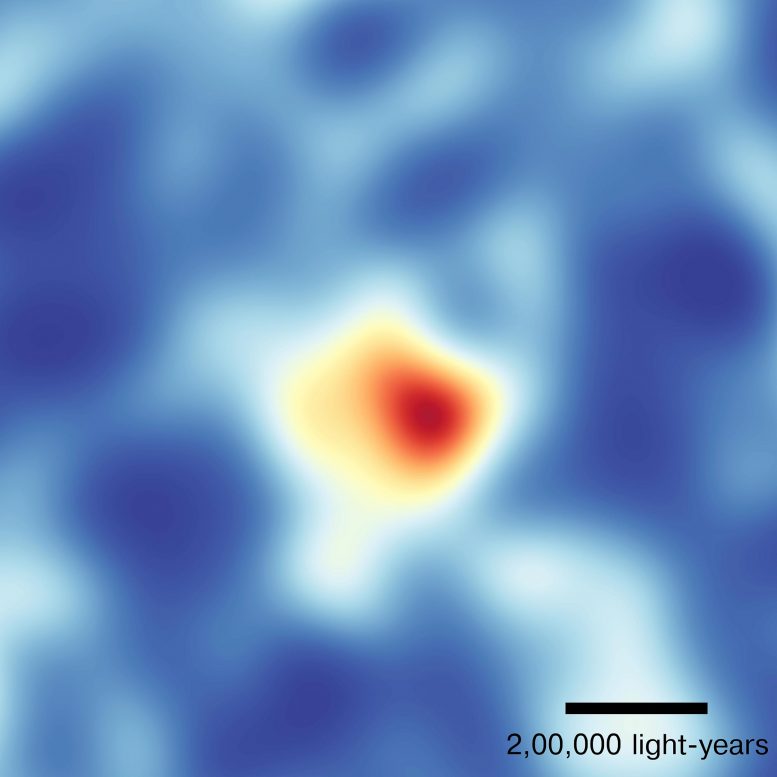
An image of the stacked 21 cm signal detected with the upgraded GMRT, arising from atomic hydrogen gas in galaxies 22 billion light years away. Credit: Chowdhury et al.
“We have, for the first time, measured the atomic hydrogen gas content of star forming galaxies about 8 billion years ago, using the upgraded GMRT. Given the intense star formation in these early galaxies, their atomic gas would be consumed by star formation in just one or two billion years. And, if the galaxies could not acquire more gas, their star formation activity would decline, and finally cease,” said Aditya Chowdhury, a Ph.D. student at NCRA-TIFR and the lead author of the study. “The observed decline in star formation activity can thus be explained by the exhaustion of the atomic hydrogen.”
The measurement of the atomic hydrogen mass of distant galaxies was done by using the upgraded GMRT to search for a spectral line in atomic hydrogen. Unlike stars which emit light strongly at optical wavelengths, the atomic hydrogen signal lies in the radio wavelengths, at a wavelength of 21 cm (8.3 in), and can only be detected with radio telescopes. Unfortunately, this 21 cm signal is very weak, and difficult to detect from distant individual galaxies even with powerful telescopes like the upgraded GMRT. To overcome this limitation, the team used a technique called “stacking” to combine the 21 cm signals of nearly 8,000 galaxies that had earlier been identified with optical telescopes. This method measures the average gas content of these galaxies.
K. S. Dwarakanath of RRI, a co-author of the study, mentioned “We had used the GMRT in 2016, before its upgrade, to carry out a similar study. However, the narrow bandwidth before the GMRT upgrade meant that we could cover only around 850 galaxies in our analysis, and hence were not sensitive enough to detect the signal.” “The big jump in our sensitivity is due to the upgrade of the GMRT in 2017,” said Jayaram Chengalur, of NCRA-TIFR, a co-author of the paper. “The new wideband receivers and electronics allowed us to use 10 times more galaxies in the stacking analysis, giving sufficient sensitivity to detect the weak average 21 cm signal.”
Reference: “H i 21-centimetre emission from an ensemble of galaxies at an average redshift of one” by Aditya Chowdhury, Nissim Kanekar, Jayaram N. Chengalur, Shiv Sethi and K. S. Dwarakanath, 14 October 2020, Nature.
DOI: 10.1038/s41586-020-2794-7

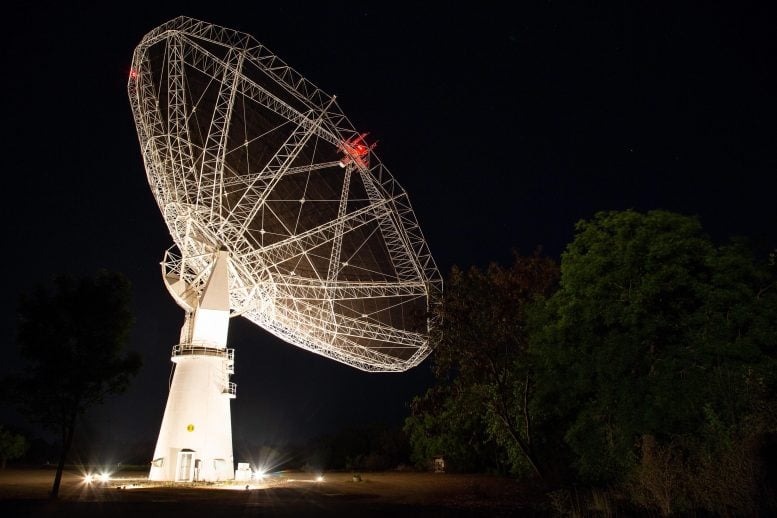
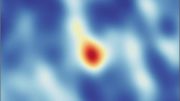
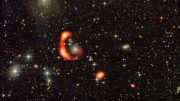
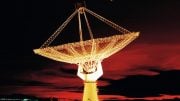
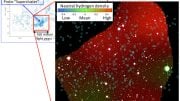
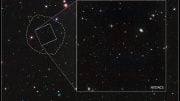

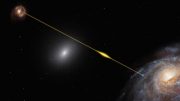
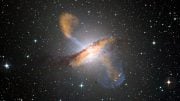
Need to check some numbers. The legend in the picture shows “2,00,000” light years. I assume that should be 200,000 since most galaxies are not 2,000,000 light years in diameter. The caption states that the galaxy is 22B light years away. That pre-dates the big bang by about 6B years, according to current theory.
Good catch! Yes, there seems to be a superfluous comma.
But a distance of 22 billion light years do not mean we are looking at galaxies that formed 22 billion years ago. The universe expansion isn’t linear. (And in fact dependent on the dominating energy type at a given time – inflation field, hot big bang radiation, matter, and recently vacuum (dark) energy – having a rapid exponential, hyperparabolic, parabolic, respectively slow exponential form. C.f. “Scale factor (cosmology)” @ Wikipedia.)
The observable universe is 14 billion years old but 92 billion light years across [c.f. “Observable universe” @ Wikipedia]. As the article say, galaxies that sits at 8 billion years of age out are at a redshift of ~1*, or at a luminosity distance of ~ 22108.66 Mlyr [search for a decent redshift calculator]. Incidentally, the 21 cm peak would lie at ~ 40 cm, which may be what the article describe as “the narrow bandwidth before the GMRT upgrade” that prohibited a larger sample.
* They really, really should always give the redshift in the article – I discovered that my favorite redshift calculator site was down and had to iterate the redshift on a more basic one. 🙁
Or I could have looked at the abstract where it is stated, silly me.
It also strikes me that apart from the redshift as such the peak will also broaden with the shift, so that may be what they really had problems with. [The paper is pay walled.]
… when one thinks the outside of the Universe must be cold, and since the big inflation or bang, which way one prefers, the Universe is bit hotter than that outer layer of surrounding space. Moreover, the stuff tends to move from hot toward the cold.
Would that also contribute to faster spread of the Universe… Just wonder!…